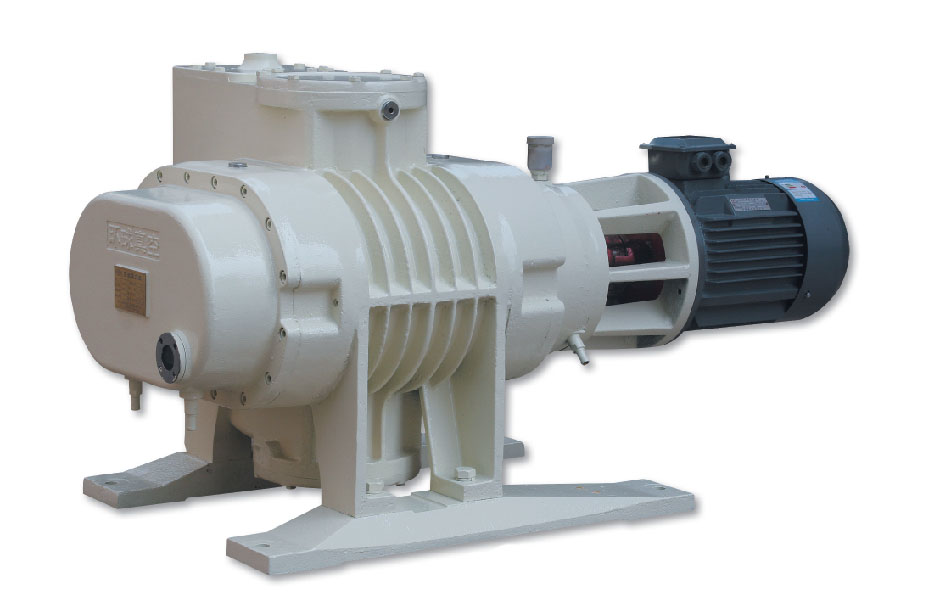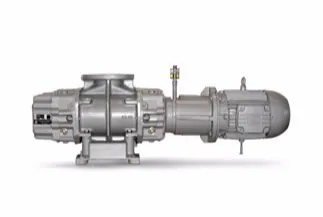Product Description
COMPANY SHOW:
20 Years
ZiBoZhuoXin Pump Industry co,.Ltd is located in a century industrial city known as the Pump Capital of China—HangZhou city, ZheJiang Province. Has over 20 years’ experience of manufacturing vacuum pumps and 10+ years’ experience of exporting.
Various products
We can suppply all type of vacuum pumps and spare parts in China, 2BV/2BEA/2BEC/SK/2SK/JZJ2B/ etc, and other industrial machine;
24 Hours
Please do not hestiate to contact us if have any urgent matters,each of your inquiries will be taken into account and get our response within 24 hours.
Product Main feature:
JZJ2B Roots series water ring unit is consists of ZJ type roots pump as the main pump,2BV/2BE series of water ring pump or Roots-water ring unit as a fore pump pumping unit. It can be used to pumping gas in addition to, can also aspirate containing water, compared to organic solvent or a small amount of dust gas. And general mechanical vacuum pump, not afraid of oil pollution, not afraid of water, gas and dust, and compared with the general water ring vacuum pump, with vacuum high and pump speed characteristics under high vacuum condition.
Advantage:
Comparing with common liquid ring vacuum pump,the capacity to remain high pumping speed under high or ultimate vacuum degree becomes its main advantage. Except for normal gas suction, this system can also pump special gas with small amount of vapor or dust. Additionally, this system is free from oil pollution, as well as vapor and dust.
Since the 2BVC type of liquid ring pump has been adopted as its fore pump, and it is compact-designed with no air leakage and high protection level. Besides,our 2BV type is more anti corrosive than 2SKC type, because all 2BVC impellers are SS304 material.
Another note, the fore pump can be designed as a closed circulation system so to reduce the environment pollution greatly.
JZJ2B Series Roots Water Ring Vacuum Unit Technical Specifications:
|
||||||||||||||||||||||||||||||||||||||||||||||||||||||||||||||||||||||||||||||||||||||||||||||||||||||||||||||||||||||||||||||||||||||||||||||||||||||||||||||||||||||||||||||||||||||||||||||||||||||||||||||||||||||||||||||||||||||||||||||||||||||||||||||||||||||||||||||||||||||||||
Note:
Above are recommended models as per national standards. Since the suction pressure will be changed as per distinguished working condition, before model selection, the verifying calculation as per actual suction and discharging process, condensation situation of condensable gas, changing time for suction pressure is required. Or referring to the clients current system is also workable.
Please refer to instructions of each pump for technical parameter checking.
The max suction pressure means the pressure under which the main pump can work. Over this degree, the main pump will be result to overloaded.
FAQ
Q: What’s your MOQ?
A: One set;
Q: What are the causes of no flow or insufficient flow of centrifugal pump?
A: There is air in the suction pipe or pump, which needs to be discharged. Air leakage is found in the suction pipeline, and the leakage is repaired. If the valve of suction line or discharge line is closed, relevant valve shall be opened. If the suction height is too high, recalculate the installation height. The suction line is too small or blocked.
Q: How to resist cavitation in centrifugal pump?
A: Improve the structure design from the suction to the impeller of the centrifugal pump;Adopt double stage suction impeller and use anti-cavitation material;
Q:What is the function of rubber ball in water ring vacuum pump?
A: Rubber ball in water ring vacuum pump, the correct name is called rubber ball valve. Its role is to eliminate the pump equipment in the operation process of the phenomenon of over compression or insufficient compression.
Q:How long is warranty?
A:One year formain construction warranty.
Q:How can I pay for my items? What is the payment you can provide
A:Usually by T/T, 30%-50% deposit payment once PI/Contract confirmed, then the remaining balance will be paid after inspection and before shipment via T/T or L/C;
welcome client from home and abroad to contact us for future cooperation.
Detail size drawing and install drawing please contact our sales in charge to get;
key:nash/simense/refurish/vacuum pumps/HangZhou CHINAMFG pump/
| Oil or Not: | Oil Free |
|---|---|
| Structure: | Rotary Vacuum Pump |
| Exhauster Method: | Positive Displacement Pump |
| Vacuum Degree: | High Vacuum |
| Work Function: | Mainsuction Pump |
| Working Conditions: | Wet |
| Samples: |
US$ 0/Piece
1 Piece(Min.Order) | |
|---|

Can Roots Vacuum Pumps Be Used for Environmental Testing in Chambers?
Yes, Roots vacuum pumps can be used for environmental testing in chambers. Here’s a detailed explanation:
1. Environmental Testing in Chambers: Environmental testing involves subjecting a product or component to various simulated environmental conditions to assess its performance, durability, and reliability. Chambers are commonly used for environmental testing and can simulate conditions such as temperature, humidity, pressure, and gas composition. These chambers create controlled environments that mimic real-world operating conditions to evaluate how a product or component responds under different environmental stressors.
2. Role of Vacuum Pumps: Vacuum pumps play a crucial role in environmental testing chambers by creating and maintaining the desired vacuum conditions. They help establish specific pressure levels, remove unwanted gases or contaminants, and enable controlled gas flow within the chamber. Vacuum pumps are responsible for evacuating the chamber, achieving the desired pressure or vacuum level, and ensuring the accuracy and reliability of the environmental test results.
3. Advantages of Roots Vacuum Pumps: Roots vacuum pumps offer several advantages that make them suitable for environmental testing in chambers:
– High Pumping Speed: Roots pumps have a high pumping speed, allowing them to quickly evacuate the chamber and achieve the desired vacuum level. This is particularly important when rapid cycling between different test conditions is required.
– Large Volume Handling: Chambers used in environmental testing can vary in size, from small-scale chambers to large walk-in chambers. Roots vacuum pumps are capable of handling large volumes of gas, making them suitable for evacuating chambers of different sizes efficiently.
– Continuous Operation: Roots vacuum pumps can operate continuously, ensuring the chamber remains at the desired vacuum level throughout the testing process. This is essential for maintaining test accuracy and consistency.
– Compatibility with Hybrid Pumping Systems: Roots vacuum pumps can be integrated into hybrid pumping systems, working alongside other pump technologies such as rotary vane pumps, scroll pumps, or turbomolecular pumps. This combination allows for enhanced pumping capability, achieving the desired vacuum levels and accommodating specific test requirements.
4. Considerations for Environmental Testing: While Roots vacuum pumps are suitable for environmental testing, several considerations should be taken into account:
– Gas Composition: Different environmental tests may involve specific gas compositions or mixtures. It is important to ensure that the selected Roots pump is compatible with the gases used in the testing process. Some gases may require special pump features or materials to avoid contamination or damage to the pump.
– Pressure Range: Environmental testing chambers may require a wide range of pressure levels to simulate various conditions. Roots vacuum pumps have limitations in terms of the ultimate vacuum level they can achieve. It is necessary to ensure that the selected pump can meet the pressure range requirements of the specific environmental tests.
– System Design: Proper system design is crucial to ensure efficient and reliable operation of the environmental testing chamber. Factors such as the chamber size, gas flow rates, evacuation times, and pressure control mechanisms should be considered when selecting and integrating Roots vacuum pumps into the testing system.
In summary, Roots vacuum pumps can be effectively used for environmental testing in chambers. Their high pumping speed, large volume handling capability, continuous operation, and compatibility with hybrid pumping systems make them suitable for maintaining the desired vacuum conditions during environmental tests. By considering factors such as gas composition, pressure range, and system design, Roots vacuum pumps contribute to the accurate and reliable assessment of product performance under simulated environmental conditions.

What Is a Roots Vacuum Pump, and How Does It Work?
A Roots vacuum pump, also known as a Roots blower or a rotary lobe pump, is a type of positive displacement vacuum pump that is widely used for various industrial applications. Here’s a detailed explanation of what a Roots vacuum pump is and how it works:
A Roots vacuum pump consists of two synchronized rotors, known as lobes or impellers, that rotate in opposite directions within a housing. The lobes have a unique helical shape with multiple lobes, which allows them to trap and move gas efficiently. The rotors are synchronized with the help of timing gears to maintain precise clearances between the lobes and the housing.
The operation of a Roots vacuum pump can be described in the following steps:
1. Inlet Stage: The process begins with the lobes rotating in opposite directions. As the lobes rotate, the volume between them and the housing gradually increases, creating a larger space at the inlet side of the pump. This expansion of the volume causes the gas to enter the pump through the inlet port. The gas is drawn in due to the pressure difference between the inlet and the pump’s internal chamber.
2. Compression Stage: As the gas enters the pump, it gets trapped in the spaces between the lobes and the housing. As the lobes continue to rotate, the trapped gas gets carried along the rotating lobes. The gas is essentially trapped in the pockets formed by the lobes and the housing. The rotating lobes then compress the gas as they move towards the outlet side of the pump.
3. Outlet Stage: As the lobes approach the outlet side of the pump, the volume between them and the housing decreases, resulting in the compression of the trapped gas. This compression raises the pressure of the gas, causing it to be expelled through the outlet port of the pump. The expelled gas is then discharged into the atmosphere or directed to a downstream process or another vacuum pump, depending on the application.
It’s important to note that a Roots vacuum pump operates as a non-contacting pump, meaning that there is no physical contact between the lobes or between the lobes and the housing. This characteristic eliminates the need for lubrication within the pump and reduces the risk of contamination or oil vapor backstreaming into the vacuum system.
Roots vacuum pumps are known for their high pumping speed and ability to handle large volumes of gas. However, they are not capable of achieving high vacuum levels on their own. To achieve higher vacuum levels, a Roots pump is often used in conjunction with other vacuum pumps, such as rotary vane pumps or diffusion pumps, in a hybrid or combination pumping system.
In summary, a Roots vacuum pump operates based on the principle of positive displacement. It utilizes synchronized rotating lobes to trap and compress gas, allowing it to be discharged at a higher pressure. The non-contacting design of the pump eliminates the need for lubrication and reduces the risk of contamination. Roots vacuum pumps are commonly employed in various industrial applications, especially when high pumping speed and large gas handling capacity are required.


editor by CX 2023-12-05